Best food for baby birds
What Do Baby Birds Eat?
Are you wondering what baby birds eat? Wonder no more! In this blog post, we will discuss the different types of food that baby birds can eat and provide tips on how to feed them properly.
So, what do baby birds eat? They tend to eat the same food their parents eat. That typically includes things like insects, seeds, and earthworms. When a bird parent hunts for food to feed its young, it will find and eat insects, worms, or seeds. Then, the bird will regurgitate what it just ate. This softens the food so they can feed it to their babies.
How Long Do Birds Feed Their Young?The average bird will feed their young for about two and a half to four weeks. However, this can vary depending on the species of bird. Some birds, like swifts, will continue to feed their young until they are eight weeks old or even older!
What To Feed Baby BirdsAs you can probably imagine, baby birds need a lot of energy to grow and develop properly. For this reason, their diet consists mainly of insects. Baby birds will also eat some fruits and vegetables, but insects should make up most of their diet. You can also feed them birdseed in small amounts. You can also supplement feed with peanuts – but you must make sure that they are not whole as this can cause them to choke.
Tips For Feeding Baby Birds
Now that you know what baby birds like to eat, here are a few tips on how to feed them:
- If you find a baby bird that appears to be injured or orphaned, contact a local wildlife rehabilitation centre before attempting to feed it yourself.
- When feeding insects to baby birds, make sure they are small enough for the bird to swallow easily. You don’t want the bird to choke on its food!
- Avoid giving baby birds cow’s milk, as it can upset their stomachs.
- Last but not least, always wash your hands before and after handling baby birds or their food. This will help prevent the spread of disease.

What To Do If You Find a Baby Bird
First of all, it’s very common to see fully feathered young birds on their own in the spring or summer. You might not see any parents around and worry they’re in danger, but this is a perfectly normal part of their development. These are called fledglings, and they’ve left the nest to build their strength before they can fly.
If you interfere with a fledgling, you could do a lot more harm than good. If they are a monogamous species of bird, both of their parents are probably nearby. If not, at least the mother bird is likely close, looking for food or watching their young from a safe distance. Your very presence may have even scared them away in the first place! You should only touch or remove a fledgling when you know it is injured or you are certain it is abandoned.
However, if you see a very young baby bird that is bald or covered in fluffy down (not feathers) it is called a nestling, and it may have fallen out of its nest. Sadly, it may have been ejected by its parents because it is unhealthy or likely to die. If you know for sure where that bird came from and you know it is healthy and uninjured, you can carefully put it back in its nest.
Sadly, it may have been ejected by its parents because it is unhealthy or likely to die. If you know for sure where that bird came from and you know it is healthy and uninjured, you can carefully put it back in its nest.
If not, that bird will need to be hand-raised and it will be dependent on humans. If you find a baby bird that appears to be injured or orphaned, the best thing to do is to contact a local wildlife rehabilitation centre. These centres are staffed with experts who can care for the bird and ensure it gets the proper food and medical attention it needs.
When Does a Baby Bird Need Help?
If you find a bald baby bird that is unable to fly, has feathers that are wet or matted, or appears to be injured in any way, it may need help from a wildlife rehabilitation centre. If you are unsure whether or not the bird needs help, err on the side of caution and contact a local wildlife rehabilitation centre for advice. Do not touch the bird before you speak to the experts.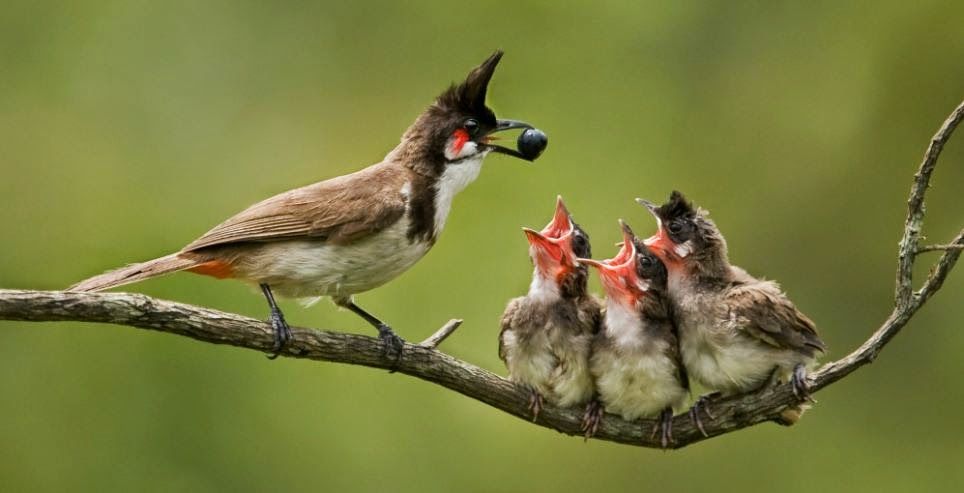
We hope this blog post has helped answer your questions about what baby birds eat and how to feed them properly. Remember, if you find an injured or orphaned bird, contact a local wildlife rehabilitation centre for assistance. And as always, wash your hands before and after handling baby birds or their food.
Have you ever found a baby bird? What did you do? Let us know in the comments below.
Author
What to Feed a Baby Bird
How to provide the right nutrition when wildlife rescues aren't an option
By
Melissa Mayntz
Melissa Mayntz
Melissa Mayntz is a bird expert, certified Master Naturalist, writer, and author with over three decades of experience. She's published in several national magazines, including National Wildlife Magazine, Bird Watcher's Digest, and WildBird Magazine. Melissa has studied hundreds of bird species around the world, traveling to Mexico, Central America, the Caribbean, the central Pacific, the Middle East, and more on birding expeditions.
Learn more about The Spruce's Editorial Process
Updated on 08/26/22
Reviewed by
Kathleen Miller
Reviewed by Kathleen Miller
Kathleen Miller is a highly-regarded Master Gardener and Horticulturist who shares her knowledge of sustainable living, organic gardening, farming, and landscape design. She founded Gaia's Farm and Gardens, a working sustainable permaculture farm, and writes for Gaia Grows, a local newspaper column. She has over 30 years of experience in gardening and sustainable farming.
Learn more about The Spruce's Review Board
Fact checked by
Sarah Scott
Fact checked by Sarah Scott
Sarah Scott is a fact-checker and researcher who has worked in the custom home building industry in sales, marketing, and design.
Learn more about The Spruce's Editorial Process
The Spruce / Catherine Song
Every backyard birder has seen the "starving baby" act by fledgling birds, when they flutter their wings and call piteously for attention from seemingly hard-hearted, indifferent parents. The desire to nurture those fluffy balls of feathers can be strong, but it is important to understand the special needs of a fledgling's diet and know what to feed a baby bird for the best nutrition.
The desire to nurture those fluffy balls of feathers can be strong, but it is important to understand the special needs of a fledgling's diet and know what to feed a baby bird for the best nutrition.
Do I Need to Feed This Baby Bird?
Baby birds have very demanding dietary needs. Depending on their age and species, baby birds may eat off and on for 12 to 14 hours per day, consuming a diet rich in insects for sufficient protein to ensure healthy growth. No human other than a licensed bird rehabilitator has the proper equipment, food supplements, or endurance to keep up that frantic feeding schedule. If you find a baby bird that appears to need feeding, the best thing to do is not to feed it, but to get it to an appropriate bird rescue organization. In many cases, the begging birds are not abandoned and the parent birds are nearby and tending to their babies as needed, even if they aren't seen.
If you find a baby bird that seems to be unfed, watch the bird closely for a while to see if the parents return to feed it within the hour. Bear in mind that it may take just seconds for a parent bird to deliver a bite to its chick, and inattentive observers may miss several feeding cycles. As the chicks grow, feeding may also be less frequent, and one parent bird may be tending to several offspring in different locations, so parental visits may be uneven. If the baby is being fed, rest assured that the parent bird is able to keep up with its demands, and no intervention is necessary if the baby does not appear injured or ill in any other way.
Bear in mind that it may take just seconds for a parent bird to deliver a bite to its chick, and inattentive observers may miss several feeding cycles. As the chicks grow, feeding may also be less frequent, and one parent bird may be tending to several offspring in different locations, so parental visits may be uneven. If the baby is being fed, rest assured that the parent bird is able to keep up with its demands, and no intervention is necessary if the baby does not appear injured or ill in any other way.
If the baby bird is not being fed and appears to be growing weaker and more lethargic, the first step should be to find a licensed rehabilitator to provide it proper care. When contacting the rehabilitator, ask for their evaluation of the bird in question before attempting any emergency feeding. If it is recommended that you feed the baby bird, he or she might have specific suggestions in mind as an emergency measure, and those suggestions should be meticulously followed.
If Feeding Is Necessary
If you find a baby bird that needs to be fed but you are unable to contact a bird or wildlife rehabilitator, it is important to know what to feed a baby bird that will provide similar nutrition to its natural diet. While every wild bird has a different diet, several types of food can serve as emergency rations when necessary. At the same time, it is critical to understand that baby birds have very different nutritional needs than adult birds, and foods you would normally feed to your backyard birds are not appropriate for young fledglings.
While every wild bird has a different diet, several types of food can serve as emergency rations when necessary. At the same time, it is critical to understand that baby birds have very different nutritional needs than adult birds, and foods you would normally feed to your backyard birds are not appropriate for young fledglings.
Good Foods for Baby Birds
- Moist dog food
- Raw liver (no seasoning)
- Hard-boiled eggs
- Dog biscuits (moistened)
- Dog or cat kibble (moistened)
The Spruce / K. Dave
What Not to Feed Baby Birds
- Water
- Bread or bread products
- Whole birdseed
- Milk
- Pet bird food
- Worms
- Kitchen scraps
The more mature a baby bird is, the more "adult" food it can consume without harm, and the longer it can go between feedings.
The Spruce / K. Dave
Tips for Feeding Baby Wild Birds
If it is necessary for you to feed a baby bird, remember:
- Offer food that is spongy in texture, not dripping with water that could cause choking or drowning.
 All dry food should be softened before being offered to a baby bird.
All dry food should be softened before being offered to a baby bird. - Food should be offered at room temperature only, never warmed or heated, and also never refrigerated or chilled.
- Keep bits of food small and in proportion to the bird's size; very small birds need very tiny bites. Cut or crush food appropriately to suit the bird's size.
- While feeding the bird, handle it as little as possible to minimize the risk of additional stress or injury. Never force the bird's bill open to eat.
Caring for Baby Birds
Remember that feeding a baby bird should be an emergency measure only. If a baby bird is abandoned and needs care, it should be taken to a bird rescue organization or experienced rehabilitator as soon as possible. Rehabilitators can not only feed it an appropriate diet for its species but can help it learn how to find its own food, evade predators, and learn other skills necessary for a successful life in the wild.
If there is no rescue organization or experienced rehab specialist available in your area, keep these tips in mind:
- Identify if the bird is a nestling (few or no feathers) or a fledgling (a feathered bird approaching adulthood).
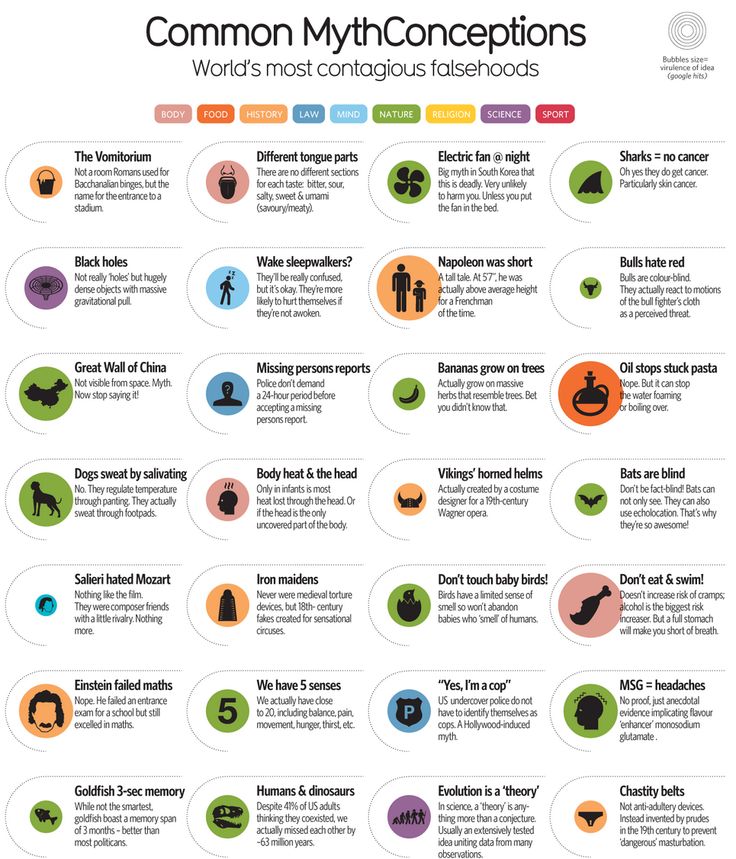 Nestlings will require much attention for a longer period than fledglings, which may be nearly ready for independence quite soon. An older fledgling can sometimes be fine if you simply place it high on a branch where its parents can find it. Nestlings, on the other hand, may require several weeks of attention (assuming a bird rehab organization is not available) to give them a chance for survival.
Nestlings will require much attention for a longer period than fledglings, which may be nearly ready for independence quite soon. An older fledgling can sometimes be fine if you simply place it high on a branch where its parents can find it. Nestlings, on the other hand, may require several weeks of attention (assuming a bird rehab organization is not available) to give them a chance for survival. - Protect it from predators—including family pets. Normally, a simple cardboard box lined with a towel, placed high enough to be out of reach of pets, will suffice. If using a lidded container, make sure it is well-ventilated. Ordinary room temperature is normally fine, though a gentle heat lamp can be used if the room is very cold at night. But take care not to overheat the young bird—in most cases, no heat source is necessary.
- Give it a "nest" by using a small towel or cloth diaper formed into a concave shape and placed in the bottom of the box. This will help support the bird's body until it grows stronger.
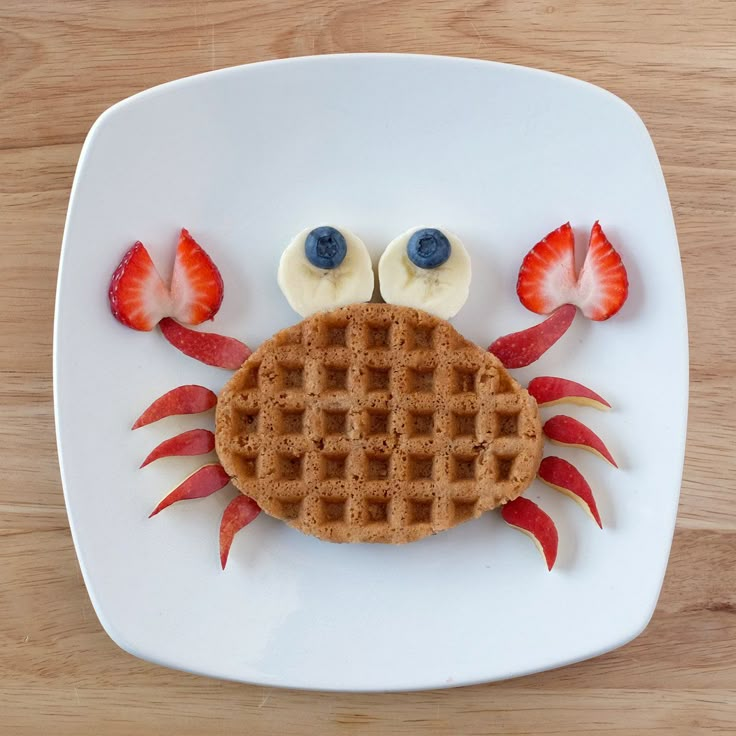
- Small nestlings are best fed with moist, well-softened food from a syringe, offered very gently, in small drops. Even a kitchen baster may be too large to be useful. As a nestling grows older, you can offer it food by dangling it from tweezers in front of its beak.
- Never try to feed water directly to a baby bird. Nestlings will get their water needs met through moisture in food. A fledgling can be offered water in a shallow dish—if it's ready to consume water this way, it will drink on its own.
- When a fledgling bird has fully feathered out and is beginning to exercise its wings by flapping, it can be given time outdoors and encouraged to begin flying. Often, it is enough to simply set the bird's containment box outside in a safe location, open the lid and wait for nature to take its course.
But remember that raising a featherless nestling bird through the fledgling stage and into a mature adult bird is no easy matter. It's always better to leave this to professionals who are experienced in the practice.
Article Sources
The Spruce uses only high-quality sources, including peer-reviewed studies, to support the facts within our articles. Read our editorial process to learn more about how we fact-check and keep our content accurate, reliable, and trustworthy.
Picking up baby birds can do more harm than good. Oregon State University.
diet in the first days of life, chicken feed norms
| The diet of chickens, especially small ones, is different from the diet of adult chickens. Many breeders who raise chickens in the household are interested in how and what to feed the chicks so that they develop properly. For healthy growth, chickens require a balanced diet in sufficient quantities. The composition of the products depends on the direction and age of the chicks. | nine0009 |
Content:
- What does healthy chicks eat?
- General rules for formulating rations
- What to feed chickens?
- General rules for feeding
- Feed for chickens of various ages
- Feeding frequency
- Feeding Features
- Farmer's Councils
What does a healthy chicken diet consist of?
Sources of proteins, vitamins, micro and macro elements are products of plant and animal origin, as well as substances synthesized in the laboratory. For the production of finished formulations in the factory, only high-quality proven raw materials are used. In feed for laying hens and broilers are introduced:
For the production of finished formulations in the factory, only high-quality proven raw materials are used. In feed for laying hens and broilers are introduced:
|
It is quite difficult to independently calculate the proportions and mix the components thoroughly without the appropriate equipment.
General dietary guidelines
The terms of growing meat breeds are 1.5-2 months, laying hens - up to six months. During this time, the bird should gain weight of 2.5-3 kg. To accelerate the growth of muscle mass in broilers, it is recommended to use specialized feed. It fully meets the needs of the bird in proteins, fats, carbohydrates, vitamins and minerals. The composition and consumption of feed should be appropriate for the age of the chicks.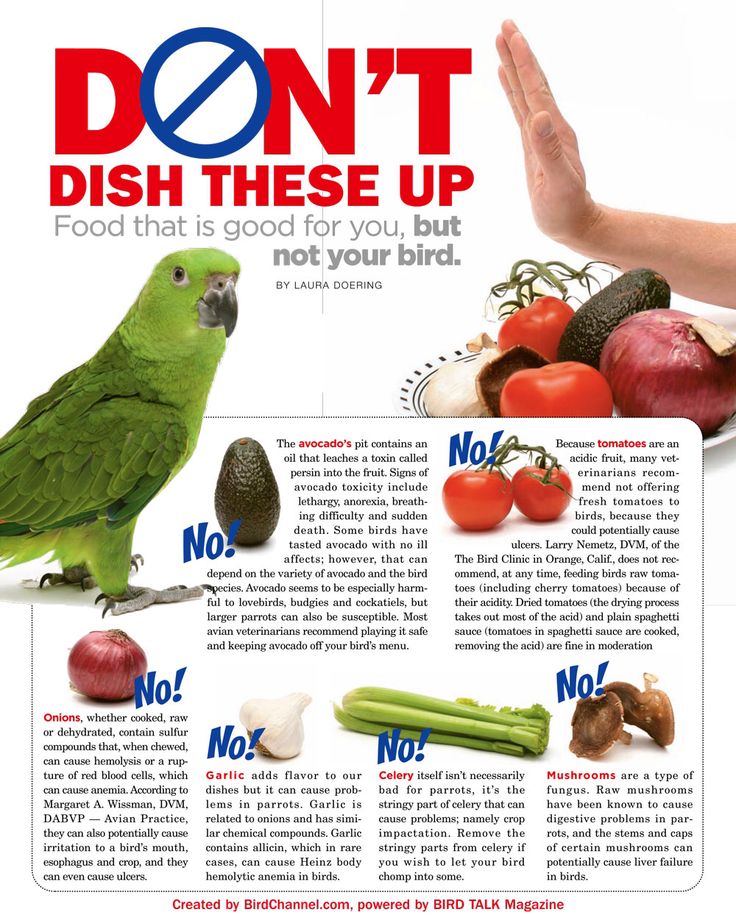 nine0013
nine0013
At 1-2 weeks of life, the foundation of the skeleton is laid in chickens, muscle mass increases at an average pace. At this time, it is necessary to introduce a sufficient amount of proteins, fiber, and mineral components into their diet.
In the growth phase, chickens are gaining weight intensively. They need as many amino acids and proteins as possible, which act as a building material for cells, as well as complex carbohydrates. The dose of vitamins and minerals received with food is increased. nine0013
At the finishing stage, the amount of carbohydrates is reduced so that the broilers gain more muscle mass, and not fat. At this stage, it is important to prevent weight loss. For these purposes, finishing compound feed is introduced into the diet.
What to feed chickens?
Cereals form the basis of the diet.
| Corn | One of the most useful and nutritious ingredients. Corn is the leader among grains in terms of protein content, while it contains less fiber than other cereals. The product is easily digested and well absorbed. nine0006 The product is easily digested and well absorbed. nine0006 |
|---|---|
| oats | Source of many amino acids. It is considered a dietary product, but contains a lot of fiber. In large quantities, it causes blockage of the intestines, so its share in the composition of the feed does not exceed 20%. Oats are given in a purified form, completely removing the film from the grains. The size of the fraction depends on the age of the bird. Sifted oatmeal is usually added to prestarter formulations. |
| Wheat nine0087 | Contains a large amount of vitamin E, B. Feed wheat is usually used in bird feed. The percentage can be up to 30%. |
| Rye | It is a source of a number of useful proteins, but contains too much mucus, which negatively affects the digestive system of chickens. It is added to some feeds in small quantities. |
| Barley nine0087 | Practically not inferior to oats in useful properties, but also contains a lot of fiber. It is introduced into the composition only in a purified and sifted form. It is introduced into the composition only in a purified and sifted form. |
| Buckwheat | Despite the fact that the product contains components useful for poultry, it is rarely used. Basically, it is added to granulated feed, because. in loose form, chickens do not peck it. |
| Bran nine0087 | Products of processing grain crops are introduced to increase the caloric content of the diet. By themselves, they have no nutritional value, so they are rarely used. |
Peeled vegetables are used as succulent feed.
| Potato | Improves poultry digestion, promotes the absorption of nutrients. It is introduced in boiled dehydrated form. In the process of preparing food, it is unacceptable to use green potatoes, since poisonous solanine has formed in them. nine0006 |
|---|---|
| Beet | It normalizes the work of the intestines, prevents its blockage, provides the needs of chickens for vitamin B2, carotene, sugar. It can be given both fresh and boiled. The content of beets in the diet is about 15%. It can be given both fresh and boiled. The content of beets in the diet is about 15%. |
| Pumpkin | It contains a lot of vitamins and microelements. The product is added in an amount not exceeding 15% of the total volume. nine0006 |
Protein components provide the daily requirement for amino acids. Protein sources are also rich in vitamins and minerals. They can be of plant and animal origin. Amino acids are well absorbed by the body. Animal proteins are obtained from various types of flour:
- fish. This product makes up to 8% of the diet, but is not used in broiler feed so that the meat does not have a specific smell; nine0016
- bone. In terms of the amount of proteins, it is not inferior to cereals, and at the same time it is rich in fats (11%) and vitamins A and E. It is given to chickens from a month old;
- blood. The product is rich in essential amino acids, but in high concentrations it provokes indigestion.
 Its share in the diet should not exceed 4%;
Its share in the diet should not exceed 4%; - pen. This component is used as an available source of protein to balance the feed composition. It is added in small amounts (up to 2%). nine0016
Dairy products are also a source of well-digestible animal protein: cottage cheese or whey. Their inclusion in feed mixtures for laying hens increases the egg production and fertility of chickens.
Legumes are richest in vegetable proteins:
- soy in terms of percentage and qualitative composition of proteins and amino acids is practically not inferior to products of animal origin, it also contains vitamins and minerals; nine0016
- peas also provide protein requirements for poultry, although to a lesser extent; chickens do not eat it well because of the specific smell and taste, therefore, no more than 10% is introduced into the feed;
- soybean and sunflower meal and cake are an inexpensive, highly digestible source of amino acids. In compositions for adult chickens, their share is 15-17%, for chickens and young animals - 10%.

General feeding rules
| nine0005 Each individual should consume approximately 15-30 g of food per day: how much depends on the breed, weight of the chicks, and the intensity of their development. In general, the amount of feed each time should be such that the young hens will eat it in 30 or 40 minutes. The remains must be removed from the feeders so as not to deteriorate, and the feeders themselves must be washed and dried. |
If the chicks do not eat the feed given to them often, then its rate should be reduced. If, on the contrary, the food is eaten quickly, then it is desirable to increase its volume. nine0013
Feed for chickens of various ages
| PC-2 | Designed for chicks under 7 weeks old. It is produced in the form of finely ground grains, designed for an insufficiently unformed digestive system, easily digestible, contains all the useful trace elements.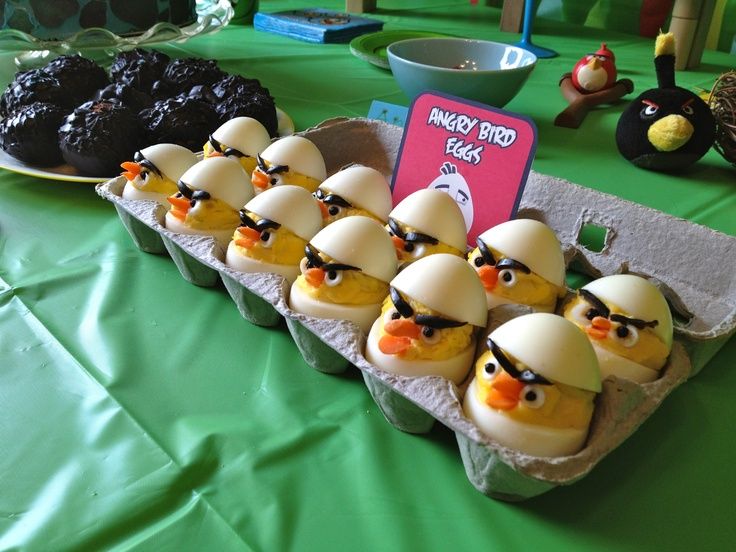 |
|---|---|
| PC-3 | Balanced mix for young animals 8-20 weeks old. Promotes rapid growth and proper formation of the reproductive system. It is produced in the form of grains with medium-sized fractions. nine0006 |
| PC-5 | Designed for broiler chickens from 2 weeks to 1 month of age. It consists of a complex of easily digestible components that stimulate a set of muscle mass. |
| PC-6 | It has similar characteristics, but is designed for broilers older than a month. |
All types of feed can be divided into three groups: nine0013
| carbohydrate | Protein | Vitamin |
|---|---|---|
Promote accelerated growth and muscle mass gain. Their composition is dominated by cereals and vegetables. Chickens digest foods high in carbohydrates well, which cause a slowdown in metabolism and rapid weight gain. Such feeds are designed for broilers and increase the average carcass weight. | nine0005 Such compound feeds are developed mainly for laying hens. A large amount of protein increases the productivity of the bird, improves the palatability of the eggs, and makes the shell stronger. Strengthen the immune system, help to survive the winter period. Usually produced in the form of concentrates, which enrich the main diet. |
According to the form of release, the compositions are of 2 types.
| nine0012 Loose ones consist of fine-grained components. The disadvantage of such compositions is that they are worse absorbed. The chicken chooses tasty crumbs from the feed, and the less appetizing ingredients are thrown away. As a result, the bird receives less nutrients. In addition, a lot of dust remains in the feeder. However, it is impossible to completely abandon loose compositions. Chickens in the first weeks of life are not able to swallow and digest large granules, therefore they can peck only small grains. |
Expanded feed is produced by short-term heat treatment under high pressure. Nutrient mixtures are in the form of granules and contain liquid components in their composition. The advantages of expanded compositions include:
However, when heated, some of the vitamins are destroyed. |
Feeding frequency
The first time chickens are fed on the same day they are born. Then, until the age of 7 days, the chicks of meat breeds are fed 6-8 times a day, from the 2nd week of life - 6 times, from the 3rd - 4 times a day, by the age of one month, chickens are fed three times a day. Chicks of egg breeds up to 1.5 weeks are fed 5-6 times a day, and by the month they are gradually transferred to 3 meals a day. nine0013
Chicks of egg breeds up to 1.5 weeks are fed 5-6 times a day, and by the month they are gradually transferred to 3 meals a day. nine0013
When choosing a mixture, it is recommended to give preference to complete formulations. However, if the breeder has enough of his own food, you can limit yourself to concentrated additives to enrich it. Such compositions are marked with the QC marking. Concentrates for meat and egg-bearing breeds solve different problems:
| for broilers | for laying hens |
|---|---|
|
|
It is unacceptable to use concentrates as the main feed, since an excess of nutrients is no less harmful than their deficiency. BVMB is introduced into the composition of the mash, taking into account the age of the chickens.
BVMB is introduced into the composition of the mash, taking into account the age of the chickens.
Feeding Features
| 1st day of life | Feeding of chickens of egg breeds begins immediately after they dry out. The first food for newborn chickens should be a hard-boiled egg. It is cut as small as possible so that the chicks can swallow small crumbs and roll it in semolina to prevent pieces from sticking to the paws and fluff. In the brooder where they are, they put a drinker with clean, boiled and cooled water. Newly hatched chicks are also fed boiled eggs under the brood hen. nine0006 |
|---|---|
| 2nd day | On the 2nd day, the chicks are already given a mash of eggs and homemade low-fat fresh cottage cheese (the ratio of ingredients is 1 to 1). The formula for feeding day-old chicks should be fresh and fed every 3 hours. |
| 1 Week | From the 3rd day, chickens are fed with a more varied mixture of cottage cheese, boiled eggs, crumbly porridge from corn, oat or wheat chips (the share of cereals should be 65%).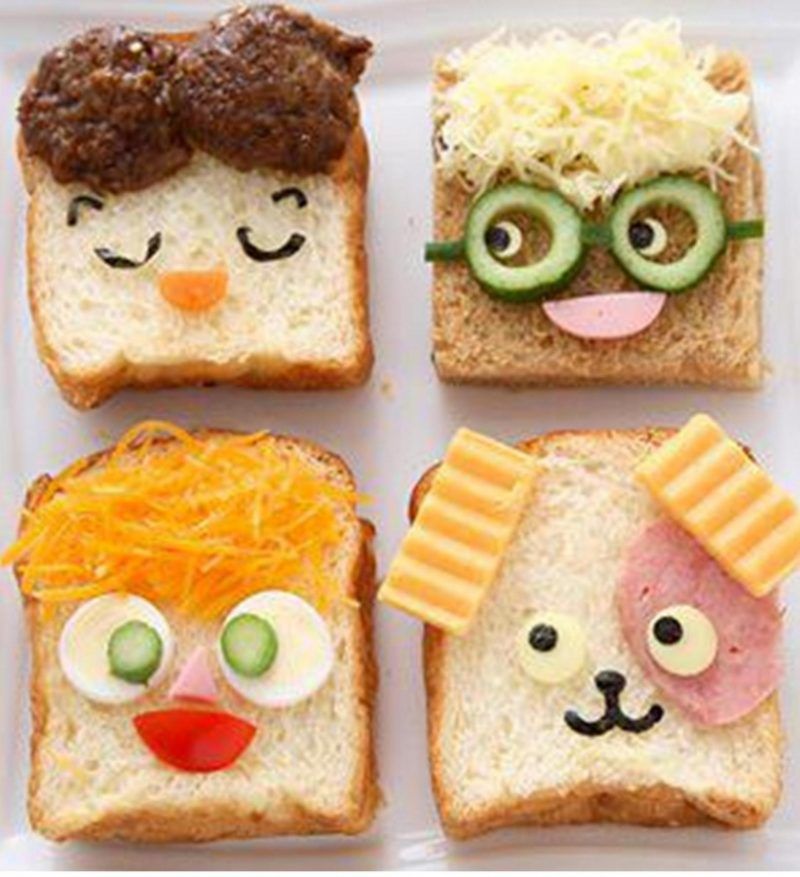 Finely chopped greens and boiled red carrots grated on a fine grater are added to them. You can give germinated grain or grass flour at the rate of 2-3 g per chicken per day. More than 5 g of such flour cannot be fed due to the high content of fiber in it. Separately, a little skimmed milk or yogurt is poured into the container; it is better not to add them to the mixers. Twice a week, a few crystals of potassium permanganate are added to the water so that it becomes slightly pink. Keep it in drinkers for no more than 0.5 hours, and then replace it with clean water. This protects chickens from stomach diseases. You can feed the chicks with special industrial compound feed for chickens from the first days of life. It is made up of products that are easily absorbed by the body of small chickens and fully satisfy all their needs. nine0006 Finely chopped greens and boiled red carrots grated on a fine grater are added to them. You can give germinated grain or grass flour at the rate of 2-3 g per chicken per day. More than 5 g of such flour cannot be fed due to the high content of fiber in it. Separately, a little skimmed milk or yogurt is poured into the container; it is better not to add them to the mixers. Twice a week, a few crystals of potassium permanganate are added to the water so that it becomes slightly pink. Keep it in drinkers for no more than 0.5 hours, and then replace it with clean water. This protects chickens from stomach diseases. You can feed the chicks with special industrial compound feed for chickens from the first days of life. It is made up of products that are easily absorbed by the body of small chickens and fully satisfy all their needs. nine0006 |
| 2-4 weeks | From 1.5 weeks of life, a little sunflower or soybean meal (3-4% of the total food volume), chalk or shells, bone meal (5-7% of the feed amount or 2-3 g per 1 chick). Particles of top dressing should not be more than 1-2 mm. Very fine gravel or sand washed in water is placed in a separate container. After 10 days, eggs are removed from the diet, but other components are introduced, for example, root crops (boiled potatoes, etc.). Salt, rice, rye, wheat bran (up to 10%), herbal flour (6-10%) are introduced into the menu of two-week-old chickens. From 3 weeks old, chicks gradually begin to accustom themselves to whole grains. nine0006 Particles of top dressing should not be more than 1-2 mm. Very fine gravel or sand washed in water is placed in a separate container. After 10 days, eggs are removed from the diet, but other components are introduced, for example, root crops (boiled potatoes, etc.). Salt, rice, rye, wheat bran (up to 10%), herbal flour (6-10%) are introduced into the menu of two-week-old chickens. From 3 weeks old, chicks gradually begin to accustom themselves to whole grains. nine0006 |
| 1 month | At this age, the young are already quite strong, they can spend time walking, where they independently find greenery, seeds of various plants, worms and beetles. If the birds are in a closed aviary and cannot pluck the grass, then they need to be given it along with grain and vegetables. In general, the share of green grass in the diet of one-month-old young animals should be about 1/3 part, no less. Grain can be given both ground and whole: the birds are already able to peck it. It can be anything: wheat, barley, corn, oats, etc. At this age, legumes can also be fed: peas, chickpeas, small beans, etc. In addition to grain products, you can feed root crops, fresh or boiled, to monthly chickens, vegetables from the garden and their tops, kitchen waste of both plant and animal origin, bran, meal and cake, compound feed. From mineral additives - bone and fish meal, chalk or lime, shell rock, salt. In addition to food, young animals should always have clean water in drinking bowls and pebbles that the bird needs for normal digestion. nine0006 It can be anything: wheat, barley, corn, oats, etc. At this age, legumes can also be fed: peas, chickpeas, small beans, etc. In addition to grain products, you can feed root crops, fresh or boiled, to monthly chickens, vegetables from the garden and their tops, kitchen waste of both plant and animal origin, bran, meal and cake, compound feed. From mineral additives - bone and fish meal, chalk or lime, shell rock, salt. In addition to food, young animals should always have clean water in drinking bowls and pebbles that the bird needs for normal digestion. nine0006 |
Chickens of meat breeds differ from egg breeds in that they need more complete proteins and vitamins, so their diet should be tailored to this feature. Therefore, it is necessary to give more protein feed, such as legumes (grains and green mass), meat and bone and fish meal, fresh kitchen waste. It should also be borne in mind that they eat more, so they need to be fed more often, especially in the first days of life.
Farmer's councils
When changing nutrition, the sensitivity of chickens to changes in composition should be taken into account. For this reason, birds should be transferred to a different diet gradually, over 3-5 days, daily adding new food to the usual food, gradually increasing its amount.
There should always be fresh water in the drinker, in which a little potassium permanganate is diluted - so much so that the liquid does not turn pink.
It is advisable to mix common salt (up to 5 g per 1 kg of the mixture) and ground egg shells into the feed. nine0013
The main disadvantage of self-prepared mixtures is the fragility of their storage. In contrast, prepared feed can be left in the feeder for as long as the chicks need to saturate.
In our company, you purchase safe, certified mixtures with high nutritional value. Products exceed the requirements of GOSTs in quality. At your request, it is possible to develop an individual recipe for specific chicken breeds. nine0013
nine0013
The MEGAMIX company cooperates with a network of dealers in Moscow and regions. You can clarify the terms of the order and delivery by phone +7 (8442) 97-97-97 or on our website.
Free consultation
Ask a question to a specialist or order a price list
Telephone
Comment
By leaving a request, you agree to the policy of processing personal data.
nine0012 09.11.2020what and how to properly feed small, medium and large parrots
Proper nutrition of a parrot is the main requirement of home care, on which the health and life expectancy of a feathered pet depends.
In the article we will look at what to feed parrots, how to choose good food for parrots of different sizes, an overview of popular manufacturers, what can be given besides food.
What should be in the diet of parrots
Food for feeding a pet parrot should correspond to the needs of its body and the nutrition that an exotic bird receives in its natural habitat. nine0013
nine0013
What should be in the diet:
1. The main part of the daily diet is cereal mixtures.
2. Germinated grain.
3. Leaves of useful plants, fresh herbs.
4. Vegetables, berries and fruits.
5. Branch feed.
6. Delicious treats and complementary treats. This category includes nuts and seeds.
7. Porridge from different cereals.
8. Drinking water.
Feed varieties
All substances necessary for the body of parrots are contained in ready-made feeds produced by trusted manufacturers. nine0013
Food types:
1. For small, medium and large parrots.
2. For adults and chicks.
3. For feeding during shedding season.
4. Specialized medicinal feed for weakened and sick birds.
5. Single-component, multi-component grain mixtures.
6. Cereal mixtures with fruit and berry additives, nuts, seeds and other useful ingredients.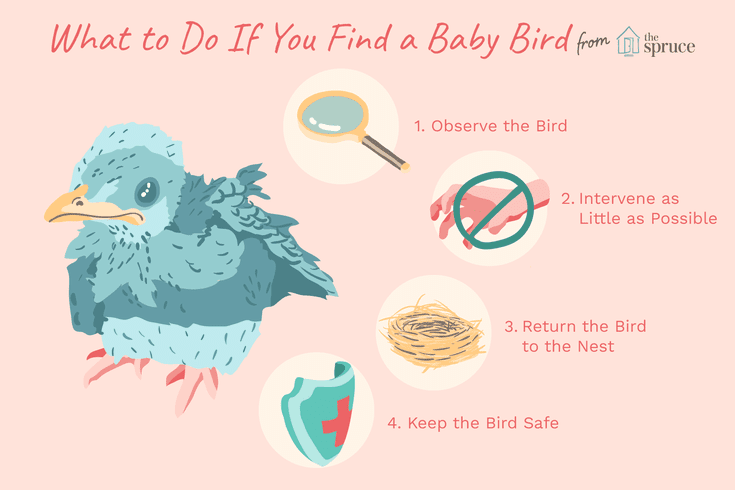
7. Natural dry food with a pure grain composition, with the addition of granules, granular mixtures. nine0013
Rating of the best food for parrots
It is difficult for an inexperienced owner to choose a good food for a parrot. Experienced breeders will help solve this issue, according to whose reviews a rating of the best feed mixtures for small, medium and large birds was compiled.
For small parrots
For parrots of small breeds, special grain mixtures with fine crushed additives are created. About 70% of the volume of the finished diet is peeled millet and oats. The remaining 30% is hemp, canary, flaxseed, oatmeal, crushed corn, sunflower seeds and other nutritional supplements. In the article "Overview of the best food for budgerigars" you can see the rating of the top 10 best ready-made mixtures for feeding feathered pets of small breeds. nine0013
Medium
Cockatiels and other medium breed parrots are fed a high energy multi-ingredient diet of 3 or more grains. The ready-made compositions also contain pieces of fruits, berries, vegetables, seeds, some plants and other nutritional ingredients that satisfy all the needs of the organism of birds of these breeds.
The ready-made compositions also contain pieces of fruits, berries, vegetables, seeds, some plants and other nutritional ingredients that satisfy all the needs of the organism of birds of these breeds.
Top 10 Foods for Parrots:
1. Fiory Parrocchetti Africa is a premium grain blend infused with natural granules containing beneficial trace elements and fatty acids. Provides a healthy condition and bright plumage. nine0013
2. "Vaka Lux" - a balanced composition at an acceptable cost for complete feeding of medium and small parrots, contains 7 useful vitamins and many trace elements.
3. VERSELE-LAGA PREMIUM AFRICAN PARAKEET is a feed mixture made from high quality raw materials. The composition includes all the seeds that parrots consume in their natural habitat.
4. "Rio" for parrots of medium breeds - a balanced composition of ingredients, enriched with calcium and flax seeds, which are a natural source of healthy fatty acids. nine0013
5. Padovan Grandmix Parrocchetti - complete grain food with fruit, biscuit crumbs, vitamin and mineral supplements.
Padovan Grandmix Parrocchetti - complete grain food with fruit, biscuit crumbs, vitamin and mineral supplements.
6. FIORY CLASSIC – food for daily feeding with cereals with sunflower, canary, hemp and buckwheat seeds.
7. "Merry Parrot" from "Zoomir" - a nutritional mixture of high-quality selected grains with a vitamin and mineral complex.
8. VITEN for Parrots is a complete food with safflower seeds and other beneficial ingredients. It is rich in iron and B vitamins.
9. "Native feed" - nutritious feed made from ecologically clean grains of the best varieties.
10. "Rio Gourmet" - crunchy food of large structure with fruit and berry additives, vegetables and nuts.
For large parrots
Large parrots need to choose food rich in vitamins, micro and macro elements. Grain mixtures are enriched with nuts and other useful additives - fruits, berries, vegetables. The top 10 feed mixes can be found in the feature article Best Foods for Large Parrots. nine0013
nine0013
How to choose a good parrot food
When choosing a parrot food, the owner has to consider different criteria. First of all, the breed and age of the bird. As we have already said, manufacturers produce different feed formulations. There are special mixtures for chicks and adults, for small, medium and large breeds. These are the first parameters for choosing food for an exotic feathered pet.
Other selection criteria:
1. The composition is natural, balanced, without harmful additives and dyes. nine0013
2. Purpose of food. For daily feeding, complete feeds are purchased. It is advisable to choose a product with a multicomponent composition of ingredients, they are most useful for birds. As a top dressing, you can choose food from the category "additional food", as well as delicious treats that are served to birds as a treat.
3. It is better to give preference to foods from trusted manufacturers, whose products have many positive reviews from experienced breeders of exotic birds. nine0013
nine0013
4. Packing volume. The larger it is, the more profitable the cost of the product.
5. Expiry date. Do not feed the feathered inhabitant with an expired mixture.
How much food should be given per day
The average daily allowance for parrots of small breeds is 20-25 g of grain mixture, medium - 30-35 g, large - 40-50 g. Exotic birds have a very fast metabolism, so food and water should always be freely available. The feeder should be filled daily, in the morning. Throughout the day, the parrot will eat this food, and uneaten leftovers should be discarded and replaced with a new portion. nine0013
In addition to food, during the day you can give your parrot vegetables, fruits, berries, herbs and other healthy foods, but without fanaticism. It is impossible to overfeed the birds, this will lead to obesity and various health problems. Natural products should not be left in the cage for a long time, as they can quickly deteriorate.
What can you feed a parrot, other than food
Earlier we mentioned what you can feed parrots at home. We list the permitted and prohibited products for feathered pets. nine0013
We list the permitted and prohibited products for feathered pets. nine0013
How to feed parrots:
1. Useful berries and fruits: peach, plum, pineapple, apple, kiwi, cherry, cranberry, watermelon, pear, apricot, lemon, tangerine, fig, banana.
2. Vegetables: tomato, zucchini, pumpkin, cucumber, carrot, sweet bell pepper, radish, beetroot, Chinese cabbage, broccoli.
3. Fresh herbs: lettuce, celery, green oat grass, dandelion, nettle.
4. Branch fodder: maple, linden, birch, apple tree, aspen, mountain ash, raspberry, currant, cherry, alder, willow, ash, elder, hawthorn. nine0013
5. Porridges from different cereals, boiled in water without salt and sugar.
6. Fresh hard-boiled chicken egg.
7. Dry fat-free cottage cheese, liquid fermented milk products.
What foods should not be given to parrots :
• potatoes;
• white cabbage;
• onion, garlic; • cilantro, sorrel;
• persimmon, avocado, mango, papaya.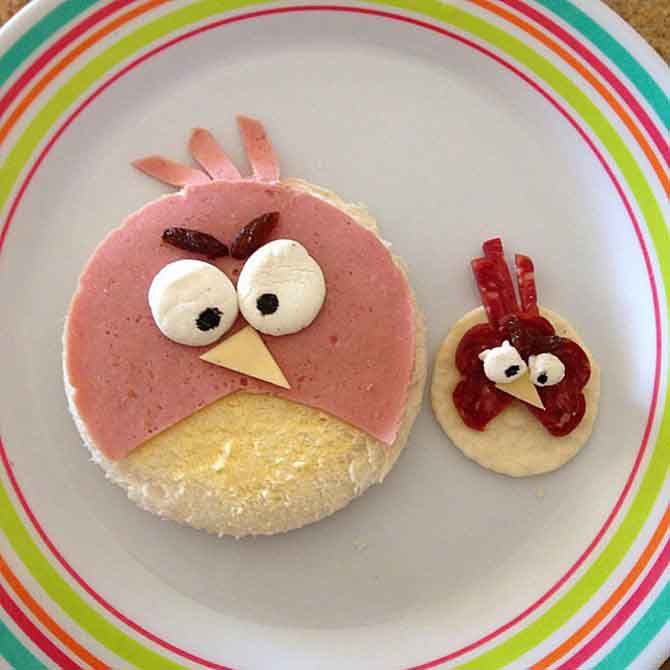

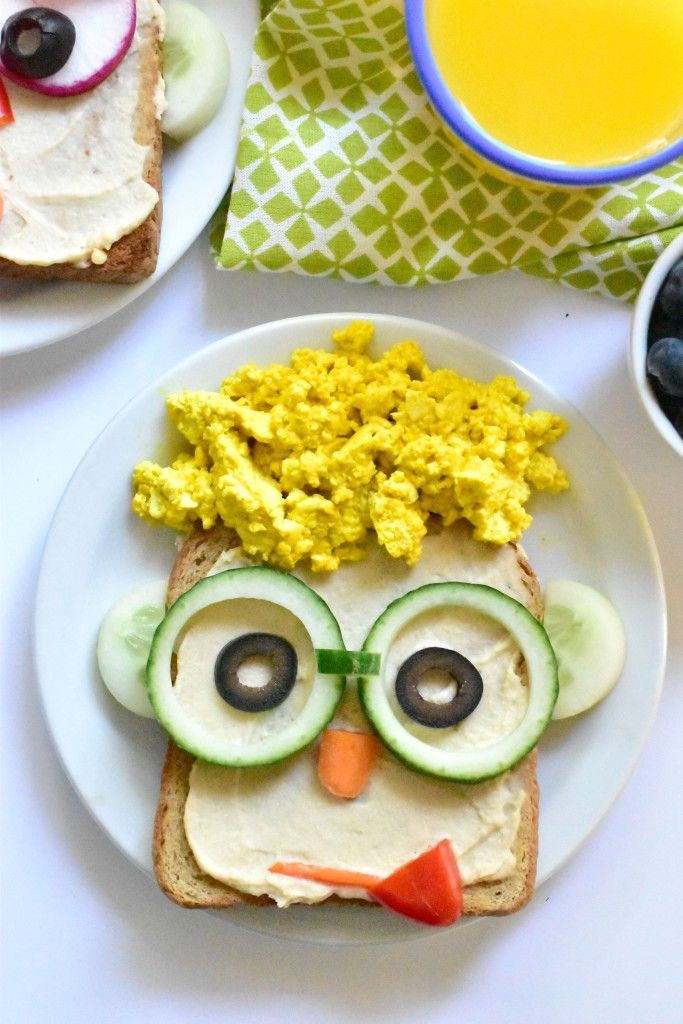 For broilers, loose compound feed can be introduced into the diet from the first days of life, and for laying hens - from the second week. When using dry mixes, it is important to provide the hens with sufficient drinking water. nine0013
For broilers, loose compound feed can be introduced into the diet from the first days of life, and for laying hens - from the second week. When using dry mixes, it is important to provide the hens with sufficient drinking water. nine0013 









